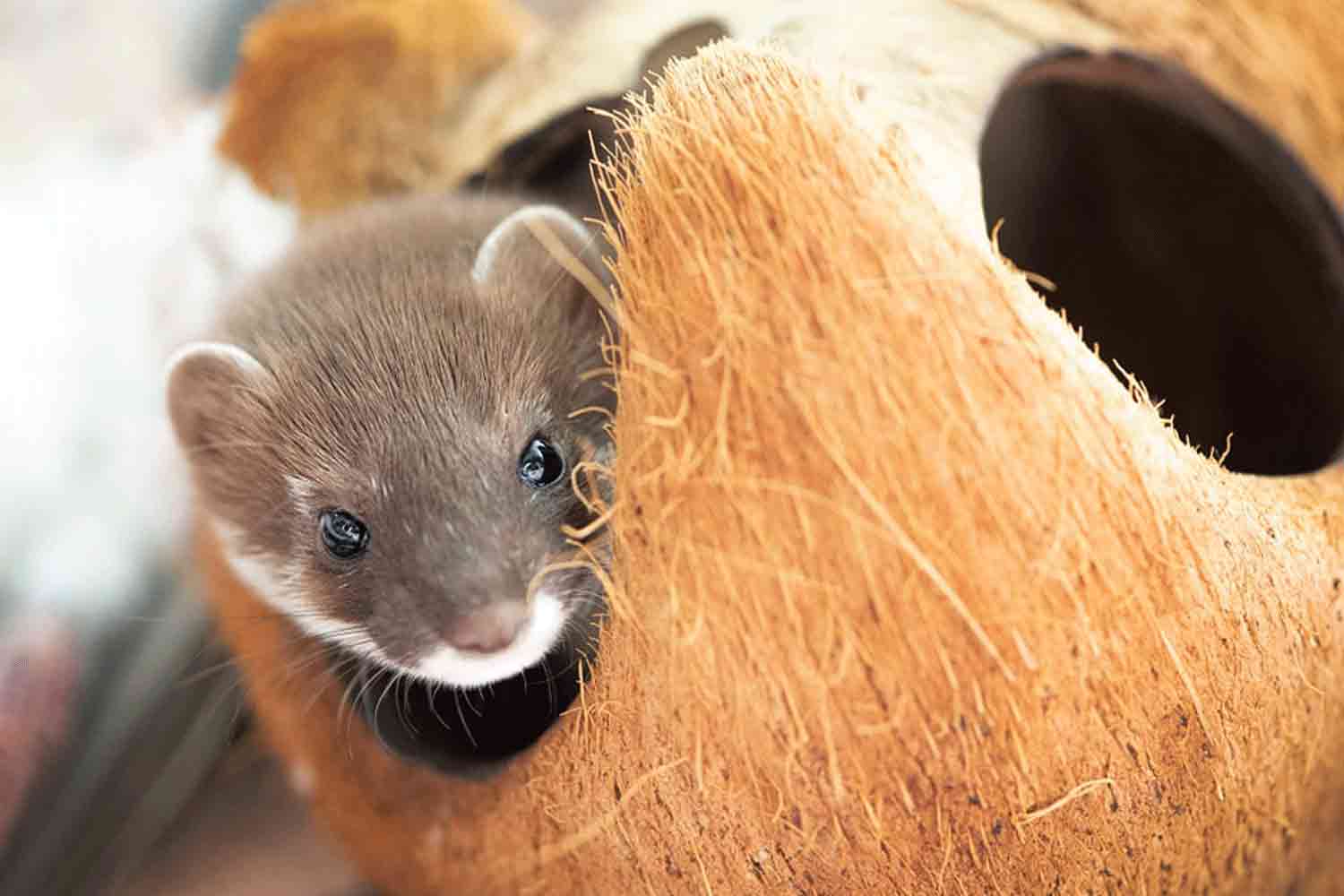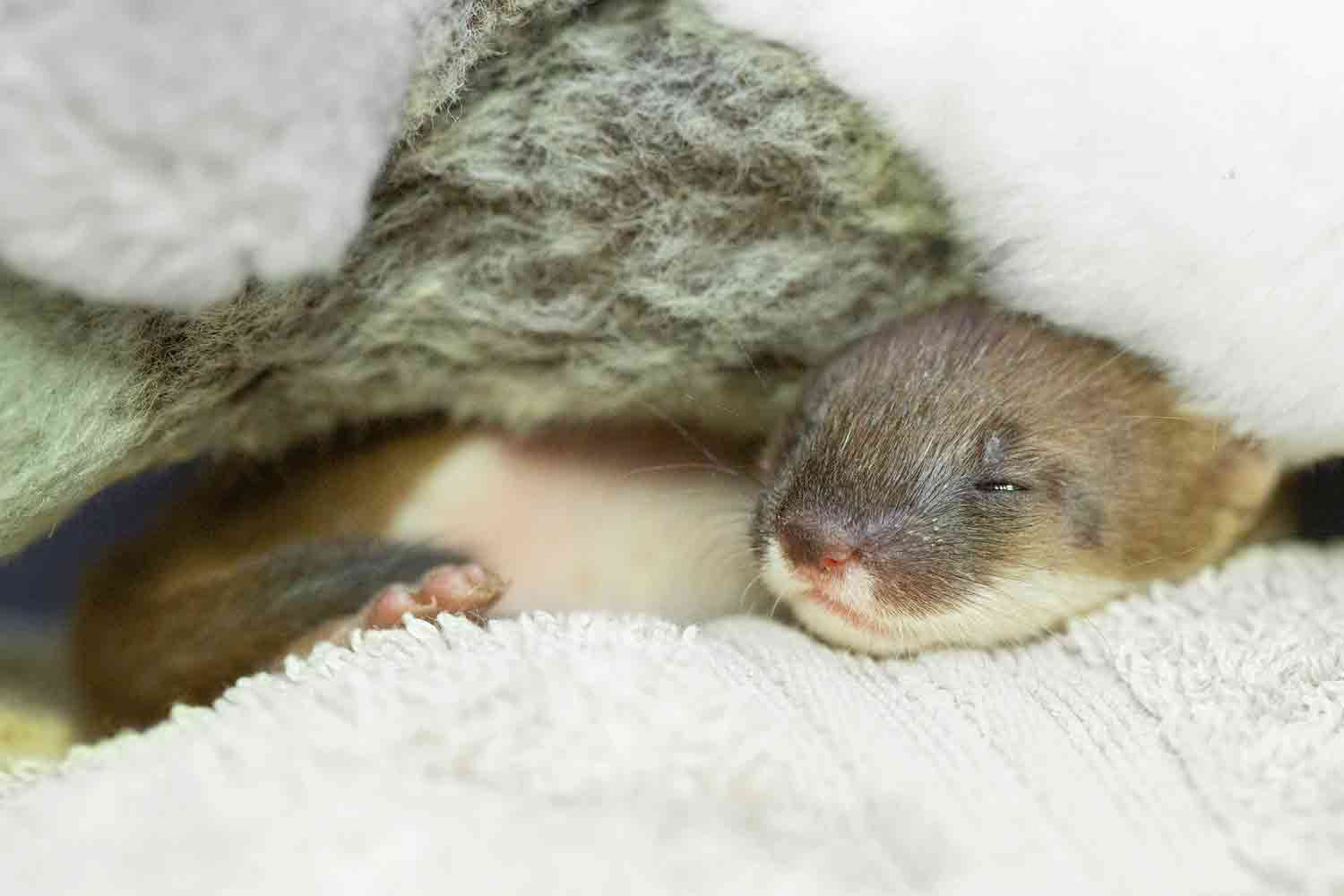Stoat
Life History
Length: 24-32cm
Tail: 9-14cm
Weight: 140g-450g
Diet: Carnivorous – rabbits being a particular favourite, but will take rodents and small birds.
Average Lifespan: 2 to 5 years
When to see them: All year round
UK population: 438,000
UK conservation status: Green

About
A member of the mustelid family, these brown backed and white throated animals can be distinguished from the similar looking weasel by the black-tipped tail, and its slightly larger size. It’s bounding gait can be seen its preferred habitats of sand dunes, grasslands and heathlands.
Predominantly solitary, stoats occupy overlapping territories marked with scent, though these are not regularly guarded. Using tree hollows, old rabbit warrens and opening under tree roots, the stoat opts to make their dens at ground level, but as remarkably agile animals, they can climb trees to prey on birds too. They are known to hunt and forage within their home range which varies between male and females, usually making trips of two to three hours up to 100 metres from their dens.
Stoats breeding season takes place in summer, but like badgers use delayed implantation, so don’t give birth until the following spring, which can consist of up to 13 kits, depending on how much food availability. Young stoats develop quickly and start hunting for themselves at around 11 weeks old.
Their Threats
Persecution: Stoats are often legally trapped and shot due to their predation of game birds.
Decline in nest sites: The loss of hedgerows and wild spaces will have a negative affect on stoat populations.
Loss of food: With their preferred prey, the rabbit, declining, this could have a knock-on affect for the stoat population.


How you can help
There are a number of simple ways you can help stoats:
- Allow wild spaces to flourish in your garden
- Use hedgerows instead of fences to prevent habitat fragmentation
- Keep a note of a local wildlife rescue in case you find an injured or orphaned stoat.
Frequently Asked Stoat Questions
What should I do if I find a stoat in my garden?
If a stoat is visiting your garden, enjoy the moment—they’re excellent at controlling pests naturally! Simply watch from a distance and avoid handling it.
I found an injured stoat, what should I do?
Young stoats face many threats as they learn to navigate their surroundings, with predators such as birds of prey and cats posing significant risks. Injuries from these encounters can lead to open wounds that quickly become infected, making it essential for an injured stoat to receive prompt care to prevent complications. In these cases, you should contact your local wildlife rehabilitation center or vet as soon as possible.
Our emergency helpline is 01372 360404.
How to pick up the stoat and what to do afterwards?
To safely handle a young stoat, especially if their eyes are still closed, it’s essential to be very gentle as they are fragile and may not bite yet. Wrapping them in a soft material like a sock, towel, or blanket can help keep them secure and comfortable when lifting them into a sturdy box.
For older or more active animals, it’s best to use thick gardening gloves for protection, as their bites can be surprisingly strong. Alternatively, carefully covering them with a towel can provide enough support while transferring them into a container. Since stoats are natural escape artists, ensure the box is thoroughly escape-proof. Keeping them warm is critical, particularly for younger animals that struggle to regulate their body temperature. If you need to add a heat source, use only warm—not hot—water in a bottle, and make sure the box has plenty of ventilation to prevent overheating.
Our emergency helpline is 01372 360404.
How can I tell the difference between a weasel and a stoat?
Weasels are smaller, with no black tip on the tail, unlike stoats which have a distinctive black tail tip.